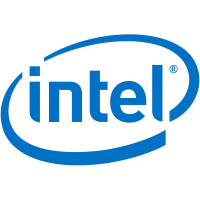Intel Atom C2558 vs Intel Celeron B810
Vergleichende Analyse von Intel Atom C2558 und Intel Celeron B810 Prozessoren für alle bekannten Merkmale in den folgenden Kategorien: Essenzielles, Leistung, Speicher, Kompatibilität, Peripherien, Sicherheit & Zuverlässigkeit, Fortschrittliche Technologien, Virtualisierung, Grafik, Grafikschnittstellen. Benchmark-Prozessorleistungsanalyse: PassMark - Single thread mark, PassMark - CPU mark, Geekbench 4 - Single Core, Geekbench 4 - Multi-Core.
Unterschiede
Gründe, die für die Berücksichtigung der Intel Atom C2558
- 2 mehr Kerne, mehr Anwendungen auf einmal ausführen: 4 vs 2
- 2 Mehr Kanäle: 4 vs 2
- Ein neuerer Herstellungsprozess ermöglicht einen leistungsfähigeren, aber dennoch kühleren laufenden Prozessor: 22 nm vs 32 nm
- 3.9x mehr maximale Speichergröße: 64 GB vs 16.6 GB
- 2.3x geringere typische Leistungsaufnahme: 15 Watt vs 35 Watt
- Etwa 84% bessere Leistung in PassMark - CPU mark: 1424 vs 775
| Spezifikationen | |
| Anzahl der Adern | 4 vs 2 |
| Anzahl der Gewinde | 4 vs 2 |
| Fertigungsprozesstechnik | 22 nm vs 32 nm |
| Maximale Speichergröße | 64 GB vs 16.6 GB |
| Thermische Designleistung (TDP) | 15 Watt vs 35 Watt |
| Benchmarks | |
| PassMark - CPU mark | 1424 vs 775 |
Gründe, die für die Berücksichtigung der Intel Celeron B810
- Etwa 47% bessere Leistung in PassMark - Single thread mark: 754 vs 512
| Benchmarks | |
| PassMark - Single thread mark | 754 vs 512 |
Benchmarks vergleichen
CPU 1: Intel Atom C2558
CPU 2: Intel Celeron B810
| PassMark - Single thread mark |
|
|
||||
| PassMark - CPU mark |
|
|
| Name | Intel Atom C2558 | Intel Celeron B810 |
|---|---|---|
| PassMark - Single thread mark | 512 | 754 |
| PassMark - CPU mark | 1424 | 775 |
| Geekbench 4 - Single Core | 308 | |
| Geekbench 4 - Multi-Core | 584 |
Vergleichen Sie Spezifikationen
| Intel Atom C2558 | Intel Celeron B810 | |
|---|---|---|
Essenzielles |
||
| Architektur Codename | Rangeley | Sandy Bridge |
| Startdatum | Q3'13 | 15 March 2011 |
| Platz in der Leistungsbewertung | 2927 | 2918 |
| Prozessornummer | C2558 | B810 |
| Serie | Intel® Atom™ Processor C Series | Legacy Intel® Celeron® Processor |
| Status | Launched | Launched |
| Vertikales Segment | Embedded | Mobile |
| Einführungspreis (MSRP) | $86 | |
Leistung |
||
| 64-Bit-Unterstützung | ||
| Basistaktfrequenz | 2.40 GHz | 1.60 GHz |
| Fertigungsprozesstechnik | 22 nm | 32 nm |
| Anzahl der Adern | 4 | 2 |
| Anzahl der Gewinde | 4 | 2 |
| Matrizengröße | 131 mm | |
| L1 Cache | 64 KB (per core) | |
| L2 Cache | 256 KB (per core) | |
| L3 Cache | 2048 KB | |
| Maximale Kerntemperatur | 100C | |
| Maximale Frequenz | 1.6 GHz | |
| Anzahl der Transistoren | 504 million | |
Speicher |
||
| Maximale Speicherkanäle | 2 | 2 |
| Maximale Speichergröße | 64 GB | 16.6 GB |
| Unterstützte Speichertypen | DDR3/DDR3L 1600 | DDR3 1066/1333 |
| Maximale Speicherbandbreite | 21.3 GB/s | |
Kompatibilität |
||
| Low Halogen Options Available | ||
| Gehäusegröße | 34 mm x 28 mm | 37.5mmx37.5mm (rPGA988B) |
| Unterstützte Sockel | FCBGA1283 | PGA988 |
| Thermische Designleistung (TDP) | 15 Watt | 35 Watt |
| Maximale Anzahl von CPUs in einer Konfiguration | 1 | |
Peripherien |
||
| Integriertes LAN | ||
| Maximale Anzahl von PCIe-Strecken | 16 | 16 |
| Maximale Anzahl der SATA 6 Gb/s Ports | 2 | |
| Anzahl der USB-Ports | 4 | |
| PCI Express Revision | 2 | 2.0 |
| PCIe configurations | x1,x2,x4,x8,x16 | 1x16, 2x8, 1x8 2x4 |
| Gesamtzahl der SATA-Anschlüsse | 6 | |
| UART | ||
| USB-Überarbeitung | 2 | |
Sicherheit & Zuverlässigkeit |
||
| Execute Disable Bit (EDB) | ||
| Anti-Theft Technologie | ||
| Intel® Trusted Execution Technologie (TXT) | ||
Fortschrittliche Technologien |
||
| Integrated Intel® QuickAssist Technology | ||
| Intel 64 | ||
| Intel® AES New Instructions | ||
| Intel® Hyper-Threading Technologie | ||
| Intel® Turbo Boost Technologie | ||
| Physical Address Extensions (PAE) | 36-bit | |
| 4G WiMAX Wireless | ||
| Enhanced Intel SpeedStep® Technologie | ||
| Flexible Display interface (FDI) | ||
| Idle States | ||
| Befehlssatzerweiterungen | Intel® SSE4.1, Intel® SSE4.2 | |
| Intel® Demand Based Switching | ||
| Intel® Fast Memory Access | ||
| Intel® Flex Memory Access | ||
| Intel® My WiFi Technologie | ||
| Intel® vPro™ Plattform-Berechtigung | ||
| Thermal Monitoring | ||
Virtualisierung |
||
| Intel® Virtualization Technology (VT-x) | ||
| Intel® VT-x with Extended Page Tables (EPT) | ||
| Intel® Virtualization Technology for Directed I/O (VT-d) | ||
Grafik |
||
| Graphics base frequency | 650 MHz | |
| Graphics max dynamic frequency | 950 MHz | |
| Grafik Maximalfrequenz | 950 MHz | |
| Intel® Clear Video HD Technologie | ||
| Intel® Clear Video Technologie | ||
| Intel® Flexible Display Interface (Intel® FDI) | ||
| Intel® InTru™ 3D-Technologie | ||
| Intel® Quick Sync Video | ||
| Prozessorgrafiken | Intel HD Graphics | |
Grafikschnittstellen |
||
| CRT | ||
| DisplayPort | ||
| eDP | ||
| HDMI | ||
| Anzahl der unterstützten Anzeigen | 2 | |
| SDVO | ||
| Unterstützung für Wireless Display (WiDi) | ||








